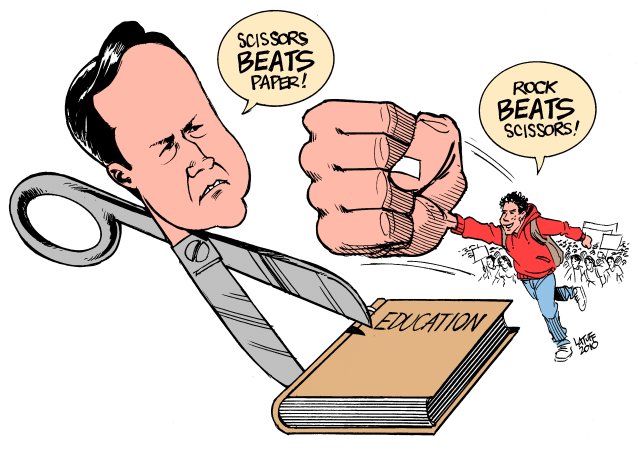
By the mid-1880s, all of the Australian colonies had passed education Acts based on the principal of “free, compulsory and secular” education. This mirrored similar legislation in Britain where the Factory Act of 1833 had made it unlawful for children under nine years of age to be employed in textile factories.
In 1878, the Factory and Workshops Act extended this to all factories and limited the working hours of children under 14 years of age.
The welfare of children in Britain was further provided for by the Education Acts of 1870 and 1880 that made school attendance compulsory until the age of 10. Across the whole of Europe, between 1840 and the 1880s, while the population increased by a third, the number of children attending school increased by 145%.
Publicly funded elementary education in Australia and elsewhere was linked to the extension of suffrage. This was the “civilising” function that Thomas Paine had argued in the late 18th century had to be exercised by government in the transmission from despotism to civilised society.
An emerging Labour Party was onto it from the start. The first platform of the Labour Electoral League in NSW, which saw 35 Labour men elected to parliament in 1891, called for “free, compulsory and technical education, higher as well as elementary”.
Education for the common good would enable the universal citizenship that was the promise of universal political suffrage.
In Victoria in 1948 almost 75% of students in the final year of secondary school were enrolled in private schools. But in the decades after this, the rapid expansion of Australia’s education systems saw universal secondary education, upper-secondary and tertiary education become increasingly important factors in the life of a growing number of citizens.
The high-water mark was reached in 1975-76. In 1948-49, the proportion of education spending provided by private sources was 20.3%; in 1975-76 this had fallen to just 5.6% – 0.35% of GDP.
It was, of course, the Whitlam Labor government that introduced free tertiary education in 1974. It was a policy Whitlam spelled out at the ALP campaign launch at Blacktown in 1972: “Education is the key to equality of opportunity … we believe that a student’s merit rather than a parent’s wealth should decide who should benefit.”
Even though student fees in 1973 were less than 5% of higher education income and were paid by only 20% of full-time students, the abolition of fees initiated a public policy shift by establishing a universal rights-based approach to educational programs.
For the ALP and its rank and file members it became a point of differentiation with the Liberal Party that they were proud to proclaim. Its public popularity was shown in opinion polls where 75% of respondents were opposed to tertiary education fees when the Fraser Liberal government attempted to reintroduce them for second and higher degrees in 1976 and 1981. On both occasions, this public support bolstered student protests that defeated the proposals.
But what the Liberal Party couldn’t do the ALP could, with the turn to neoliberalism of the Bob Hawke government. In 1986, the Labor government announced that a Higher Education Administration Charge (HEAC) of $250 per student would be introduced the following year.
The rationale for tertiary education fees was provided by a committee set up by the education minister John Dawkins and chaired by the former NSW Premier Neville Wran.
It established as fact the fiction that fee abolition was unable to broaden participation. The inconvenient truth that between 1974 and 1987 the proportion of women students had risen from 38.5% to 50.1% was explained away in class terms, that “participation by women in low socioeconomic groups has not improved”.
The report went on to establish a myth that has been perpetuated since by both major parties: “The fundamental inequity in our present system of financing higher education is that small and privileged sections of the community who benefit directly from access to higher education make no direct contribution to the costs.”
Free tertiary education was abolished by 56 votes to 41 at the ALP conference in Hobart in June 1988. Among the opposition was the then Victorian Premier John Cain, who argued that the cost of free tertiary education could be easily funded from budget surpluses at a time when the company tax rate had just been reduced from 49% to 39%.
The Higher Education Contribution Scheme (HECS) was introduced in 1989 as a deferred fee of $1800 per full-time student, repayable through the taxation system. Once introduced with bi-partisan support, the only trajectory for the fee was upwards.
As to the spurious rationale of private rather than public benefit from higher education, as far back as 1964 the report of the Committee on the Future of Tertiary Education in Australia (known as the Martin report after the chairperson Sir Leslie Martin) commissioned by the Menzies government, had reported that the benefits of higher education to individual students were but “a fraction” of the benefits accruing to society as a whole.
In 2001 an OECD report found that an additional year of education raised output per capita by between 4% and 7%.
A more recent OECD study reports that it is the Australian public that profits most from higher education while students bear the majority of the costs. Students now contribute 55% of their tertiary education costs compared with an average of 30% in OECD countries. Male students repay $6 for every public dollar of higher education funding and females $4.40.
The economics of higher tertiary education fees don’t make any sense. But to the major parties the politics of privilege do. Which is why we will see a return to what Whitlam abolished in 1974 — parent’s wealth and not student merit will determine access to universities.
Like the article? Subscribe to Green Left now! You can also like us on Facebook and follow us on Twitter.